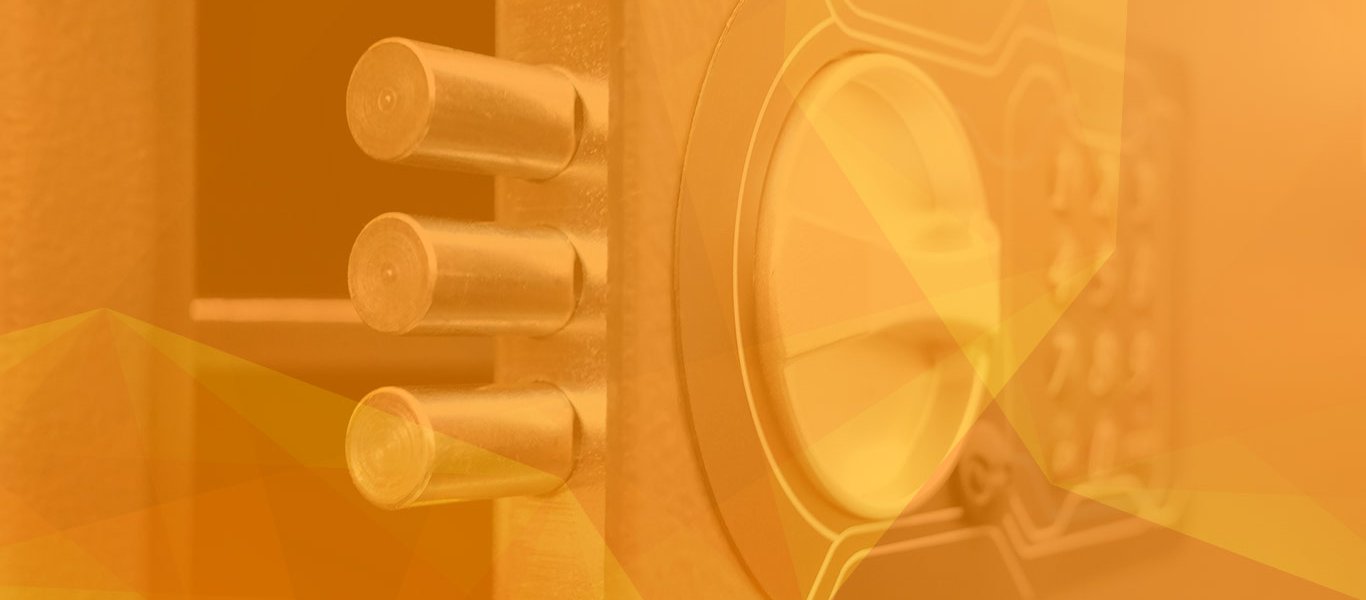Locking Options for Safes
Posted: Thu, 01 Mar 2018

Key Locks

Keys have been used to open and lock all manner of products over the years and whilst early locks, by today’s standards, were basic, given the tools available at the time, they were advanced.
Over the years, development of locks has moved forward, whereby we now have keylocks with multiple levers. In addition, we also have double bitted keys, where the teeth on the key are both sides of the stem, to aid security.
Modern safe keys, tend to be made from a soft alloy, which does not stand up well to being misused, whereas older keys tended to be made from brass or steel which is much harder wearing. As a result, in a situation where a key is being used a lot, they can wear out quickly. Some modern double bitted keys also have a hole at the end of the key, so that when the key is inserted into the lock, the hole slides over a pin at the centre, guiding the key into place. It is not uncommon for debris to get pushed down this hole, in situations where a key has been kept in a pocket for example. This results in the key not going far enough into the lock and the lock not working.
On higher quality safes, the door becomes thicker and as a result, the key needs to be longer. To save having to carry long keys around, it is possible to get split keys (the stem is designed to break at a certain point), so you only need to carry around the smaller key bitt. On older safes, they used a long stem with a detachable bitt, that would drop into a slot at the end of the stem. This would be tightened into place with a screw end. These bitts can easily come loose and drop into the lock, should the screw end not be secured properly.
For insurance purposes, safes up to Grade III only need to have one lock, whereas, safes from Grade IV upward, must have two. For domestic clients that have safes secured by a key lock, they should be advised not to leave the key in the house, when they are not at home. If they should be burgled, and the key found, this would invalidate the insurance. The vast majority of domestic clients tend to go for digital locks these days, for this very reason.
Mechanical Combination Locks

Combination locks have been around since Roman times; however, the modern incarnation has been used by safe manufacturers since the 1850s. Since then, they have developed slightly, using a turning dial to enter either a 3 digit or 4-digit code to open the safe. This style of lock, whilst reliable, is not so much enjoyed by domestic clients, as they find them fiddly to operate and not that easy to set up. If a safe is tucked inside a cupboard, with not much light to see the dial, it is easy to get the numbers wrong.
The aim of the combination lock is to save having to carry keys around, however, since the electronic age and the advent of digital locks, they have become less popular.
Digital Or Electronic Combination Locks

Digital combination locks use a keypad (like a calculator), whereby the user enters their code (normally 6-8 numbers), to operate the lock. With some locks you then physically rotate the keypad to unlock the safe, others use a motor to draw the lock back, allowing the user to throw the handle & open the door. Locking the safe then just requires the door to be shut and the keypad turned back to the locked position, or the motor does this for you.
Most of these locks run on battery power, with the batteries either being located inside the keypad on the front, or in a battery box on the rear of the door. Larger commercial clients may have the locks on their safes connected to mains power, this would normally be in tandem with an alarm connection.
Modern electronics are far more reliable these days, however, that does not mean to say that they do not go wrong. The most common problem is the user not changing the battery, which then results in the safe being locked out. If the battery is in the keypad, then this is easy to change when the battery is on the inside of the safe, the lock manufacturer usually gives a method to apply power to the keypad externally, sufficient to get the safe open.
Electronics do break down and are also more susceptible to temperature changes. Placing a safe in a cold damp area, for example, is asking for trouble. Whereas a key lock may last a lifetime, at some point a customer may have to replace a lock on their safe, assuming it can be done so. Safes at the bottom end of the market, sometimes have a fixed style of lock, which could possibly be replaced if the safe is still manufactured. If not, the client may find themselves needing to purchase a new safe.
Electronics also allow for additional features, of which the following are a sample:
- Master code
- Manager code
- User codes (individual codes for each person)
- Time delay (the safe will not open straight away, but at a set time 1-99 mins afterwards)
- Timelock (during close of business the lock will not open even with the correct code)
- Alarm connection
- Duress connection (the lock sends a signal to the alarm company if the user is being forced to open the safe)
- Audit function (where a lock has multiple users an audit can determine who last accessed the safe, at what time, how long it was open for – not all locks have date & time programming).
If power is lost, this can affect some of the above functions, especially time lock
This article is not meant to be exhaustive or go into detail but give just enough information for the casual user to explain the differences. Should you have any questions about what locking may suit your needs best, this should be discussed with your supplier.



